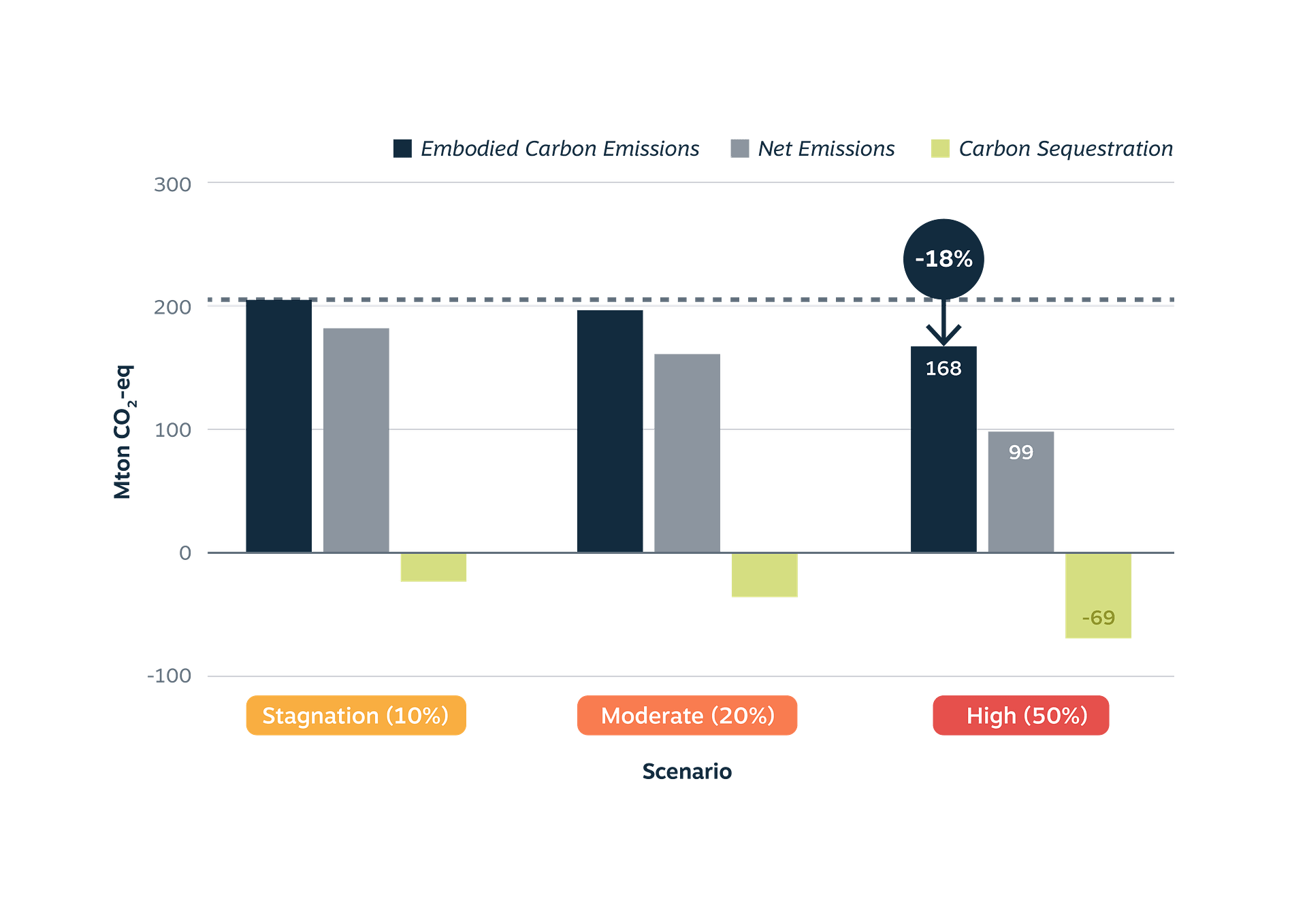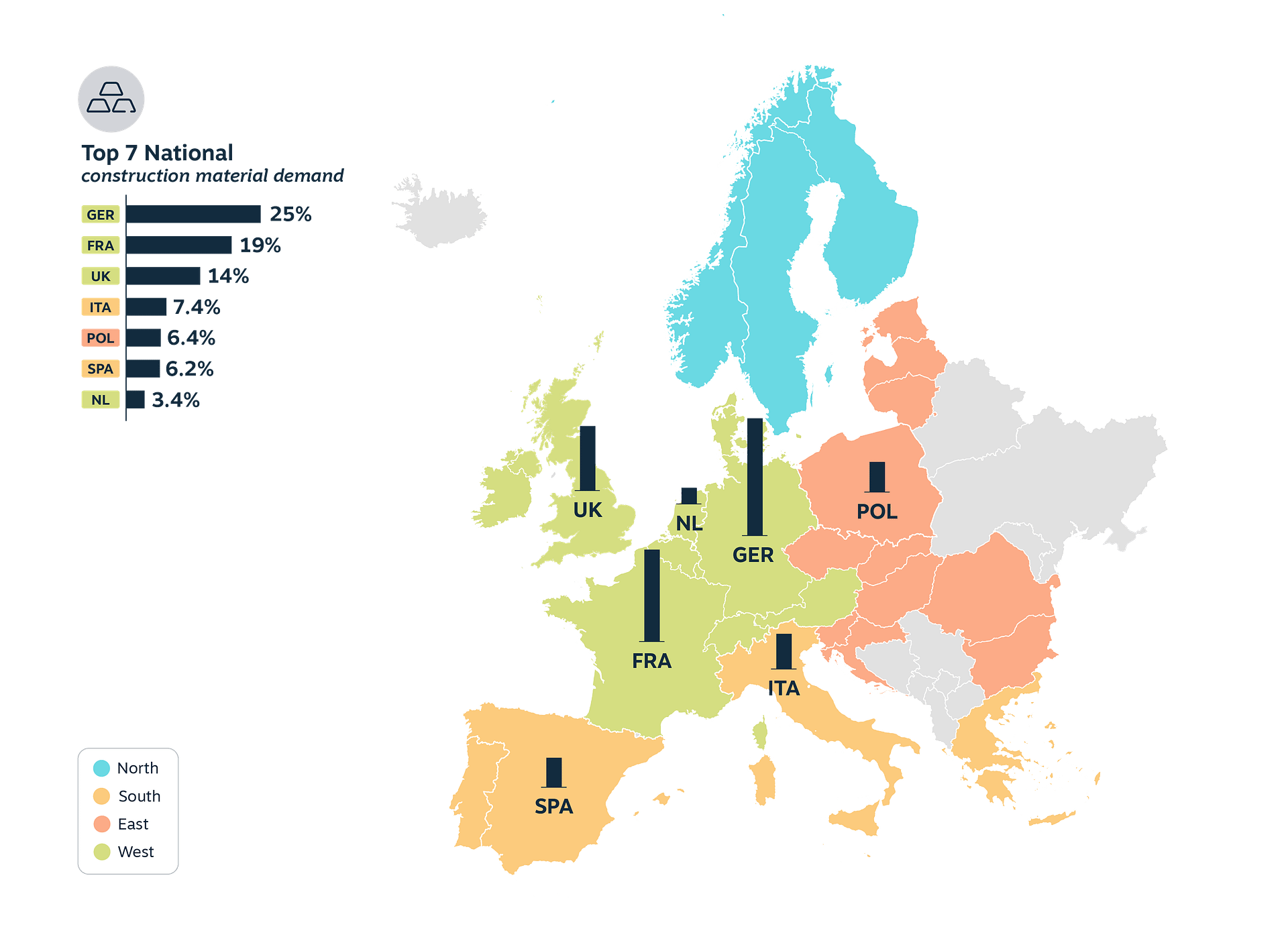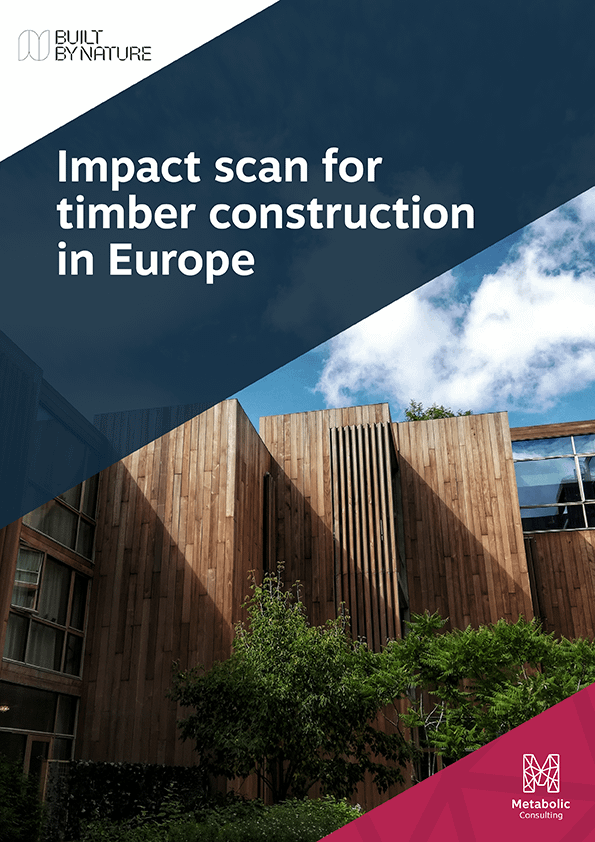Impact scan for timber construction in Europe
The impact of timber construction and implementation within planetary boundaries
On the European level, the built environment is one of the most impactful economic sectors. But if current construction practices continue, the EU27+UK construction sector will exceed its carbon budget by 2026. CO₂ emissions can be reduced by 18% (37 Mton) by 2030 if half of new residential construction is bio-based. To prevent burden shifting, several planetary boundaries should also be considered when implementing bio-based construction.
- Client: Built by Nature
- Date: October 2023
Quantifying the potential impact of timber construction and exploring the systemic implications
Timber and bio-based construction are considered promising strategies to reduce the impact of the construction sector. Yet questions arise regarding the actual potential impact, geographical implications, and how this strategy can be implemented within planetary boundaries. How does the large-scale application of bio-based construction materials affect our forests? Are we shifting the burden to another planetary boundary if we solely focus on reducing carbon emissions?
Modeling “business-as-usual” and the implementation of biobased construction
This report clarifies these issues by modeling the current impact of the EU27+UK construction sector and quantifying the reduction potential through timber construction based on the most accurate data currently available. In addition, this report examines the current knowledge on the capacity of European forests and other systemic barriers that should be taken into account.
Substantial potential to reduce impact, but implementation needs caution
CO₂ emissions can be reduced considerably by 18% (37 Mton) by 2030 if 50% of new residential construction is bio-based. However, recent research points out that forest resources and ecosystems are not without limits. To ensure implementation within planetary boundaries, we propose six ‘next steps’:
- Redirect existing timber flows to be used in ‘high- value’ applications.
- Stimulate sustainable forestry practices.
- Develop bio-based construction with higher resource efficiency, from a broader range of wood species and forest products.
- Create thorough measuring systems to better understand actual consumption of wood.
- Understand the inertia in the construction sector. Projects that start today will be realized in 5-10 years.
- Push for bio-based construction, but understand we also need to critically review our demand for new housing.












